Robert D. E. Henderson
Automatic classification of multiple catheters in neonatal radiographs with deep learning
Nov 14, 2020
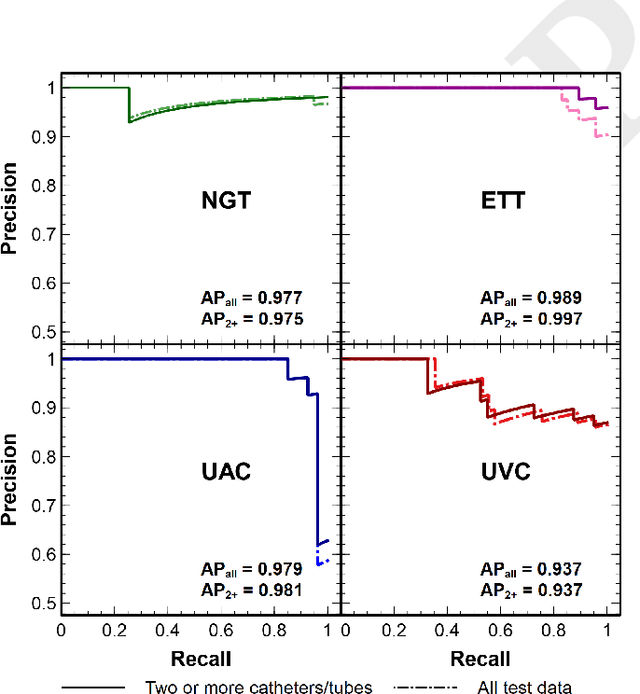
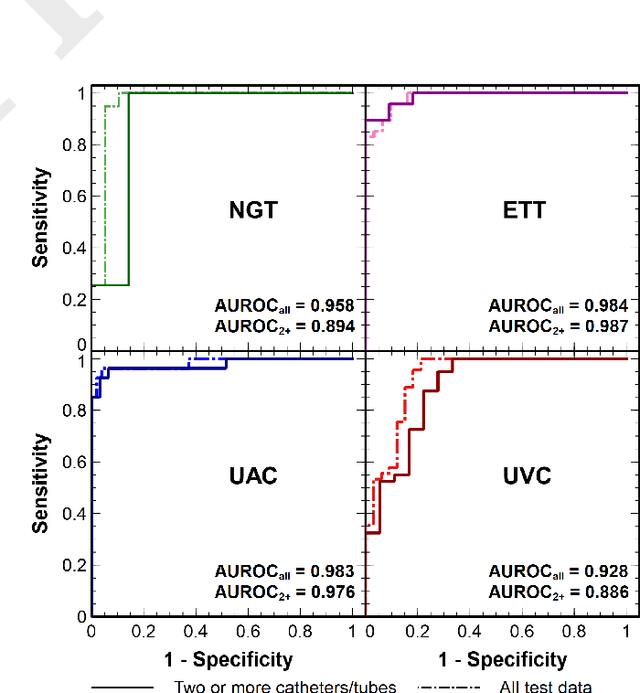
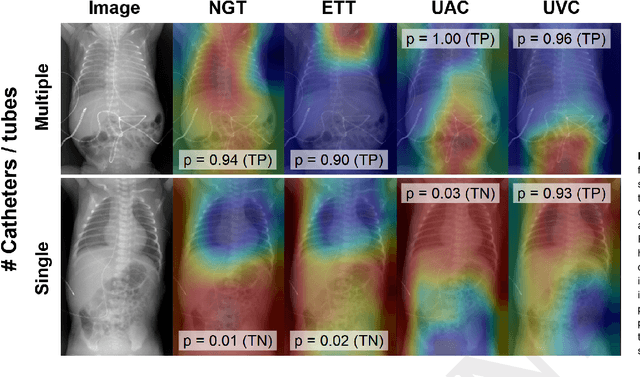
Abstract:We develop and evaluate a deep learning algorithm to classify multiple catheters on neonatal chest and abdominal radiographs. A convolutional neural network (CNN) was trained using a dataset of 777 neonatal chest and abdominal radiographs, with a split of 81%-9%-10% for training-validation-testing, respectively. We employed ResNet-50 (a CNN), pre-trained on ImageNet. Ground truth labelling was limited to tagging each image to indicate the presence or absence of endotracheal tubes (ETTs), nasogastric tubes (NGTs), and umbilical arterial and venous catheters (UACs, UVCs). The data set included 561 images containing 2 or more catheters, 167 images with only one, and 49 with none. Performance was measured with average precision (AP), calculated from the area under the precision-recall curve. On our test data, the algorithm achieved an overall AP (95% confidence interval) of 0.977 (0.679-0.999) for NGTs, 0.989 (0.751-1.000) for ETTs, 0.979 (0.873-0.997) for UACs, and 0.937 (0.785-0.984) for UVCs. Performance was similar for the set of 58 test images consisting of 2 or more catheters, with an AP of 0.975 (0.255-1.000) for NGTs, 0.997 (0.009-1.000) for ETTs, 0.981 (0.797-0.998) for UACs, and 0.937 (0.689-0.990) for UVCs. Our network thus achieves strong performance in the simultaneous detection of these four catheter types. Radiologists may use such an algorithm as a time-saving mechanism to automate reporting of catheters on radiographs.
Computer-Aided Assessment of Catheters and Tubes on Radiographs: How Good is Artificial Intelligence for Assessment?
Feb 09, 2020
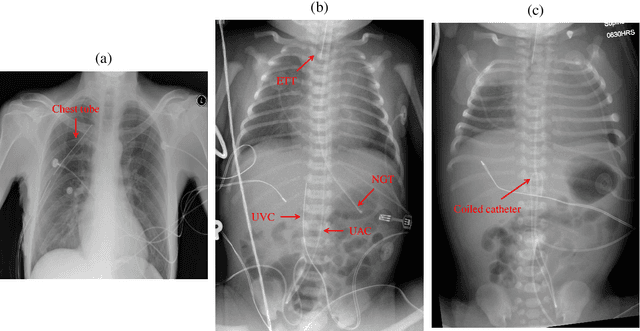
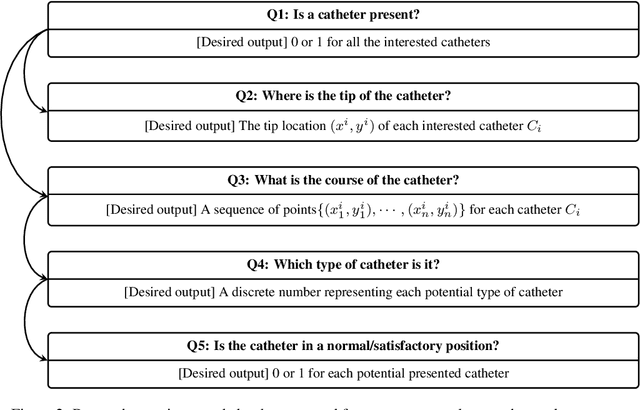
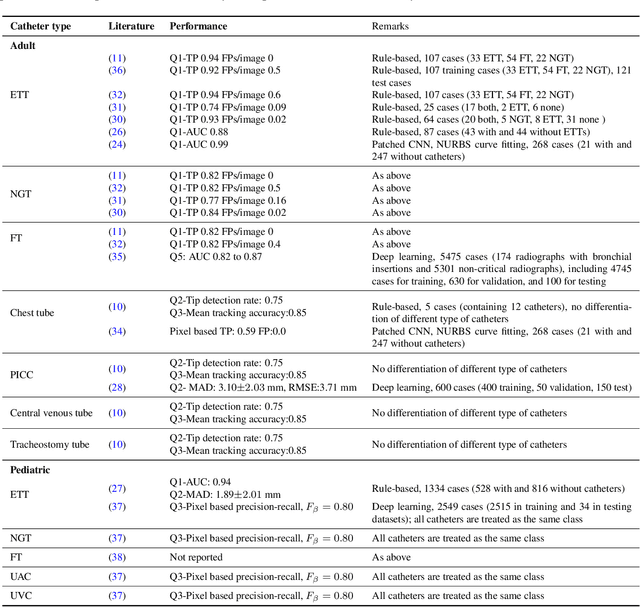
Abstract:Catheters are the second most common abnormal finding on radiographs. The position of catheters must be assessed on all radiographs, as serious complications can arise if catheters are malpositioned. However, due to the large number of radiographs performed each day, there can be substantial delays between the time a radiograph is performed and when it is interpreted by a radiologist. Computer-aided approaches hold the potential to assist in prioritizing radiographs with potentially malpositioned catheters for interpretation and automatically insert text indicating the placement of catheters in radiology reports, thereby improving radiologists' efficiency. After 50 years of research in computer-aided diagnosis, there is still a paucity of study in this area. With the development of deep learning approaches, the problem of catheter assessment is far more solvable. Therefore, we have performed a review of current algorithms and identified key challenges in building a reliable computer-aided diagnosis system for assessment of catheters on radiographs. This review may serve to further the development of machine learning approaches for this important use case.
 Add to Chrome
Add to Chrome Add to Firefox
Add to Firefox Add to Edge
Add to Edge